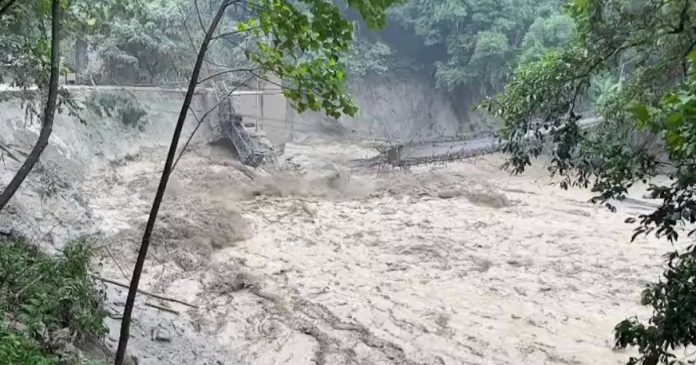This week, a glacial lake in the Indian Himalayas burst, resulting in flash floods that killed at least 40 people while rescue workers spent a second day searching for dozens of people who went missing.
On Wednesday, the Lhonak Lake in the mountainous northeastern state of Sikkim overflowed after a cloudburst sparked torrential rains and what appeared to be an avalanche, leading to significant flooding in the Teesta River.
One of the worst natural disasters to hit the area in more than 50 years, it is the most recent in a string of recent extreme weather-related disasters in South Asia’s Himalayas that have been linked to climate change by scientists.
Authorities in Sikkim claimed that 22,000 lives had been affected by the most recent disaster, which occurred just before a busy holiday and tourist season in the picturesque state.
At Lhonak Lake, scientists and government officials were developing an early warning system for glacial floods that, once fully operational, might have given residents more time to flee, according to project participants who spoke to Reuters.
On Thursday night, the death toll was 18 according to Sikkim officials. Emergency teams found another 22 bodies that had been washed away, according to officials in the downstream neighboring state of West Bengal, who spoke to Reuters. There were still thought to be 75 people missing.
However, north Sikkim is completely cut off even though water levels have dropped in some areas. The affected areas cannot be reached by relief teams, a state official named Tseten Bhutia told Reuters over the phone. He added that the area’s landline and mobile phone networks were not functional.
7,600 people were housed in relief camps, and 2,400 people had already been evacuated, according to Bhutia. Institutions of higher learning, both private and public, are closed until October. 15.
Rescue efforts were hampered in the state by the loss of 15 bridges. The Indian government claimed that every bridge that was located downstream of the NHPC hydroelectric plant Teesta-V had either been washed away or submerged.
Social media posts included images and videos of vehicles stuck in the mud, small, clogged streams running alongside hillsides, and silt- and stone-covered roads and walkways.
As the weather in the area gets better, the army said it will use helicopters to evacuate nearly 1,500 stranded tourists.
A defense ministry spokesperson claimed on social media that military supplies, including weapons and explosives, were washed down the Teesta River.
According to local lawmaker Pradeep Kumar Barma, a mortar shell that later exploded after being picked up by residents of a nearby district in the West Bengal state injured six people and killed one child.
The first five days of October saw Sikkim receive 101 mm (four inches) of rain, which is more than double the average amount. This rainfall triggered floods worse than the one in October 1968, which is believed to have killed 1,000 people.
On Friday, the region is expected to receive a lot of rain, but the intensity of the showers is expected to decrease, according to the India Meteorological Department.
The main highway connecting Siliguri, West Bengal, to the rest of the nation collapsed, cutting off Sikkim, a tiny Buddhist state of about 650,000 people that is tucked into the mountains between Nepal, Bhutan, and China.













